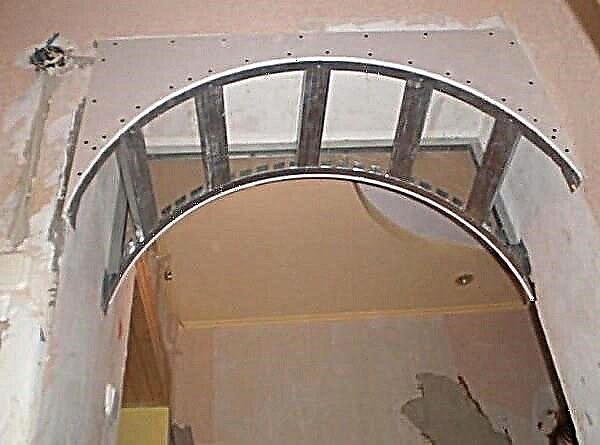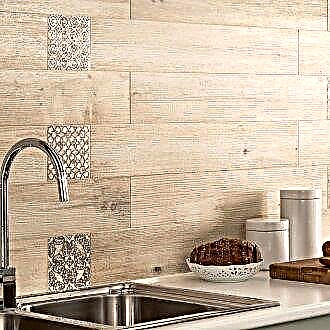
Despite the fact that the metal is a strong and durable material, its surface still needs protection. From time and bad weather, it can lose its impeccable appearance, so you should take care to cover the product with a special varnish.
What is the peculiarity of a transparent varnish for metal?
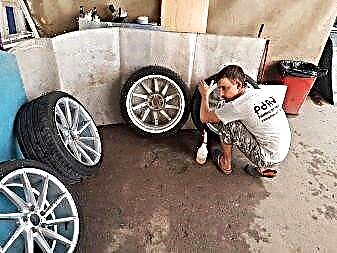

Features and types
Transparent varnish designed to cover metal surfaces can be very different. Despite this, all such products are capable of protecting products. Thanks to them, rust will not appear on the metal surface, temperature changes will not adversely affect it, and this will help to significantly extend the product's life. In addition, this tool helps to protect the metal from moisture, prevent the appearance of mold. Most commonly used clearcoat, the species of which will be described in more detail in this article.
If you choose among colorless varnishes, then it is worth paying attention to the polyurethane agentwhich can be matte or glossy. It has a waterproof effect, due to which it is widely used both in external and internal works. Most often, transparent varnish in the form of an aerosol is produced. Aerosol is easy to apply on any surface without leaving smudges.which is very important. In addition, this type of varnish, like a spray, dries quickly. Polyurethane is a waterproof varnish that will reliably protect the metal from damage and increase its wear resistance.
Also, this tool is used as a base before applying colored varnish or paint on a metal surface.


Often while working with metal use the so-called "SC" varnishes (nitrocellulose). One of the main advantages of this tool is that it dries very quickly. With it, it will be possible to significantly accelerate construction or repair work. Experts recommend using it primarily for internal work..
The acrylic-based product can be attributed to the same category of varnishes.. It is easily applied to a metal surface, and after drying it forms an invisible transparent film that will reliably protect the product. Acrylic varnish is particularly resistant and can withstand even mechanical damage. In addition, such a surface will not lose its ideal appearance for a long time, despite exposure to sunlight or severe frost. Also, acrylic varnish is practically odorless, which allows it to be used during work inside the house.
Alkyd varnish is also ideal for indoor and outdoor use.. Most often it is sold in the form of an aerosol.
This tool has all of the above qualities and will be reliable protection for any metal product.
Tips & Tricks
You can give some useful tips for those who soon plan to work with varnish for metal products ^
- When buying an aerosol, be sure to pay attention to the date of manufacture and shelf life. If the product was stored for a long time under inappropriate conditions, then the surface coated with it will soon lose its appearance, cracks will appear.
- When working with any type of varnish, protect your hands and wear rubber gloves. It is also worth taking care of protecting the respiratory tract and wearing a respirator.
- Conventional products (not sprays) can be applied to the surface with a brush. But experts recommend using a roller, which will achieve uniform application.


- The surface to be coated with the product must be even and clean; if necessary, grinding will be necessary.
- Before using the aerosol, read the instructions. Often such a tool is recommended to preheat in a special water bath.
- If the product is applied in several layers, it is imperative to wait until the previous layer has completely dried.
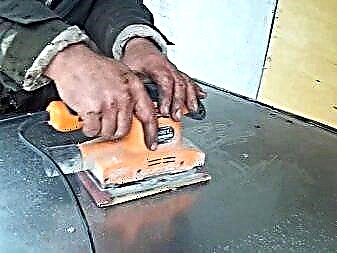

How to use colorless spray varnish, see below.
Bituminous
Such a varnish for metal appeared on the market not so long ago. In production, a special grade of bitumen is used, mixed with polymer resins. In addition, additives are necessarily present in the composition, as well as organic solvents. The operational and physico-mechanical properties of this composition are not satisfactory. The material is suitable not only for metal, but also for wood, stone.
When applied to the surface, a black protective film is formed. It is resistant to mechanical damage. But even the manufacturers themselves offer to use this solution only temporarily. For example, while polished products are stored or transported.
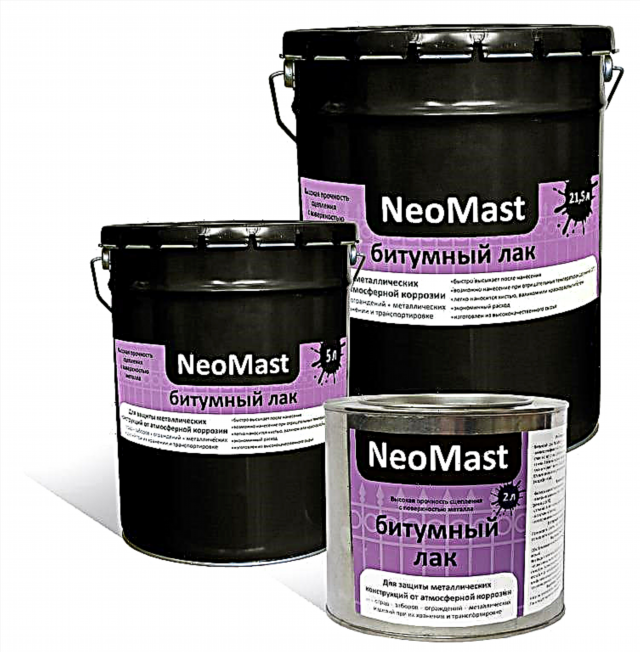
Of the characteristics that varnish for metal has, it is worth noting the following:
- metal varnish is first of all an antiseptic,
- resistance to acids, alkalis,
- weather resistance,
- heat resistance
- elasticity and strength
- the structure of the composition has pores, which contribute to increased frost resistance,
- environmental Safety.
The price of the composition is low, not to mention the quality. The demand for materials in this category is increasing, because buyers often say that "I polish with this material."

Polyurethane
There are transparent, matte, glossy options. There are black and other colors. The substance is made from polymers, in particular polyurethane. Operational characteristics will pleasantly surprise customers. A great option that can become a high-quality finish for internal surfaces of metal tanks.
An acceptable situation is when polyurethane varnish is used in everyday life. It doesn’t matter if we are talking about interior or exterior finishing work. Aerosol is easy to apply and dries quickly, does not contribute to the formation of smudges.

Characteristics are described as follows:
- long-term operation of both varnish and the coating that it protects,
- resistance to environmental influences,
- chemical inertness
- moisture resistance
- elasticity, strength and overall stability,
- heat resistance
- wear resistance
- excellent adhesion.
If you choose a clear spray lacquer, then it can be mixed with dyes of your choice.
On the video: a review of the varnish for metal.
Acrylic
Most suitable to protect black and color products with a metal base or analogues made of alloys. The coating is characterized in that it dries almost instantly. After it, waterproof films appear on the surface, black.
A great option for metal products that are constantly at elevated temperatures or in high humidity.

Such varnishes are built on acrylic resins, which contributes to their dispersion with water. A paint brush or spray-gun is best suited for applying the composition to the surface. Varnish is suitable for both indoor and outdoor use. Acrylic resins are often used for processing in the automotive industry.
Acrylic varnish has the following properties:
- extends the service life of metal and iron products, similar products,
- proven full protection against explosions and fires,
- lack of toxic secretions,
- creating a durable and flexible film on the surface that can withstand the most severe mechanical stresses,
- resistance to oils and salts,
- protection against corrosion processes,
- good adhesion (colorless varnish also has it),
- moisture resistance
- heat resistance.
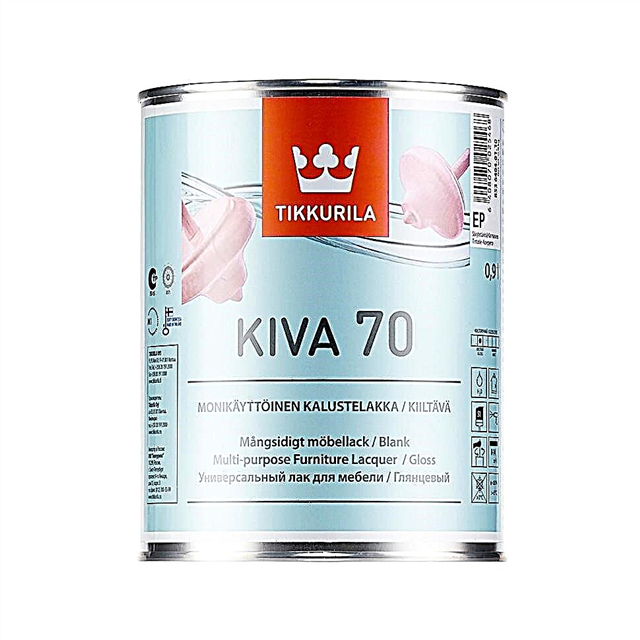
Alkyd
The production of these varieties is based on polymers, alkyd resins. Thanks to this treatment, metal surfaces begin to shine. Alkyd varnish (especially heat-resistant) is applied as an aerosol. For this, you can use rollers or special brushes.

Among the characteristics, the following features that the aerosol possesses are noted:
- performance of work inside and out,
- resistance to mechanical stress,
- high adhesion with other materials,
- wear resistance
- moisture resistance
- resistance to any types of household chemicals,
- the ability to create a durable coating that provides additional protection.
Furnace varnishes
A special kind of protection with paints and varnishes. This type of aerosol is heat resistant, it is able to withstand temperatures up to 250 degrees above zero. The product after such processing becomes hydrophobic. Pleased with high weather resistance along with constant protection against corrosion. Black does not prevent this.
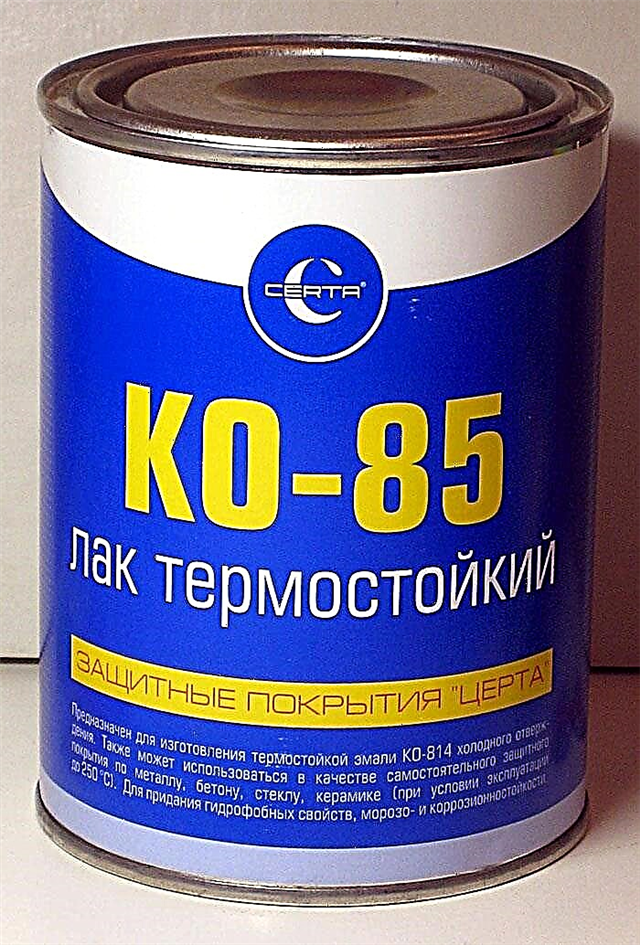
Useful Tips
The crucial step in working with varnish is the preliminary preparation of the surface. Usually start with grinding using a special material. It is called a grinder, equipped with rectangular blades, littered with edges.

The surface should become absolutely flat after the cleaning. But even after this, additional grinding is often required, involving the use of sandpaper. First, use a coarse-grained, and then a fine-grained version. Emery paper is needed so that traces of cutting tools can be completely removed.
If grinding along, then there will be a greater chance of avoiding serious scratches on the surface. This applies not only to wood, but also to metal. The surface should become glossy matte after polishing, if you look at it from the sunny side.

The aerosol varnishing method is most suitable for metal. Previously, the cylinder with varnish must be heated using a special water bath. Then the graininess decreases, and the work itself is performed more accurately. Subsequent layers are applied only after the previous ones have dried well.
Features and Benefits
Manufacturers of coatings produce quite a few varieties of varnish for metal. Each type of such product will have its own technical characteristics.
All varnishes for metal surfaces have common qualities:
- the composition of this material necessarily includes substances that protect the metal from corrosion,
- the coating created by varnish is characterized by high strength and wear resistance,
- mixtures not only create a durable coating, but also extend the life of metal structures,
- well protect the surface from moisture and other negative external manifestations.
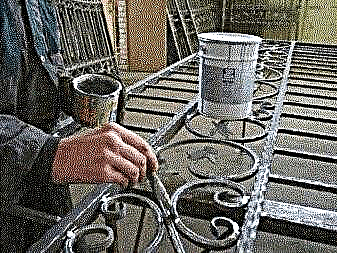
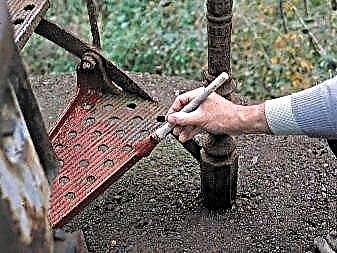
Types and form of release
In the modern market of finishing materials, there are many varnishes of various compositions and properties that can be used to protect metal surfaces.
The classification of the mixtures is as follows:
- Kuzbasslak or bitumen varnish,
- polyurethane based coating
- acrylic based varnish,
- alkyd mixtures,
- heat-resistant solutions for stoves and fireplaces,
- varnish "Tsapon".
Varnishes for metal are produced mainly in the form of a clear solution. However, black and color mixtures are found, and pigments can be added to some types of colorless formulations.
In addition to the shade, paints and varnishes differ in terms of the gloss of the created coating:
- matte
- semi-matt
- shiny glossy finish
- semi-gloss
- high gloss.


According to the form of release, one-component and two-component compositions are distinguished. One-component mixtures are ready for application. Such varnishes are not very popular, as they are inferior in quality to two-component compositions.


Bicomponent mixtures are divided into a base and a hardener. To prepare the solution, the components must be mixed with each other. This should be done immediately before the start of repair work.


Kuzbasslak
Kuzbasslak is made on the basis of natural or artificial bitumen. To improve the technical characteristics of the coating in the production of the mixture, special additives are used. After drying of such a mixture, a strong film is formed on the metal surface, which protects the structure from mechanical stress.
Bitumen varnish can be used in the process of metal etching. Those areas that are not subject to etching must be covered with Kuzbasslak. The resulting film will reliably protect the treated surface from chemicals.

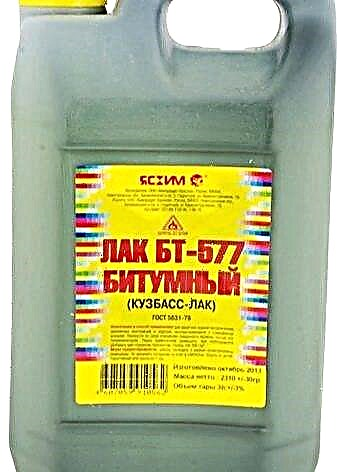
Bitumen mixtures, in turn, are divided into several subspecies that are different in some of the components contained. Some characteristics of the solutions may vary, depending on the composition.
All varieties of bitumen solutions have the following positive properties:
- low price
- Excellent anti-corrosion performance
- high level of protection against moisture,
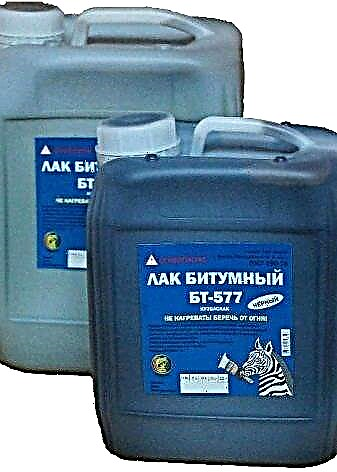

- the mixture creates a high-strength coating,
- elasticity and resilience
- resistance to temperature differences.


Acrylic based
Mixtures based on acrylic are not inferior in quality to other varnishes for metal. One of the distinguishing features of acrylic compositions is the high drying speed of the coating.


After drying, the varnish forms a very durable waterproof film on metal structures. Due to these properties, the mixture is ideally suited for the processing of metal products that are operated in conditions of high humidity or often come in contact with water.
Acrylic varnish has the following advantages:
- the material contains no toxic substances,
- strengthens the surface and increases the life of metal products,
- resistance to mechanical stress,
- fireproof

- prevents corrosion
- resistance to salts and oils, which is why it is often used to cover cars,
- protects metal structures from the influence of negative environmental factors,
- excellent adhesion.
Heat resistant
Heat-resistant mixture for stoves and fireplaces withstands the influence of high temperatures (over two hundred and fifty degrees). This mixture is often used as an additive to alkyd varnishes and acrylic based solutions. Oven varnish creates a reliable anti-corrosion protective coating.


Lac "Tsapon"
The Zapon mix is a type of nitrolac. The solution creates not only a strong protective coating, but also decorates the surface, since color pigments can be added to its composition. When certain coloring agents are added, the consistency of the varnish may become more dense, similar to a liquid gel.
This type of nitro varnish can be used for priming metal. Primer "Tsapon" prevents the formation of rust and perfectly protects the surface from destruction.


How to choose and how to apply?
Before making a choice in favor of one or another varnish for metal, it is necessary to take into account many factors.
When choosing a suitable coating, you can use the following recommendations:
- Explore the range of metal coating mixes. Each type of varnish has its own characteristics and technical characteristics.
- Consider the scope of the paintwork. Mixtures for outdoor use must have good moisture resistance and resistance to temperature extremes.
- The desired color of the coating. In the modern building materials market, one can find not only transparent varnishes for metal, but also pigmented options.
- Desired gloss level of the finished coating. The matt surface is easier to care for.A glossy coating looks more attractive, but not very practical, as it is susceptible to various contaminants and scratches that will be clearly visible on a shiny surface.
Scope of application
Processing is performed for copper, cast iron, aluminum alloys, steel structures with a low degree of alloying. It is worth considering that not all compounds are suitable for internal or external work, although there are universal ones. It is better to check this information with the seller, as well as read the recommendations on the label.
For structures with a complex surface (shaped forging, small elements), a liquid form of release is suitable, and the aerosol version will perfectly cope with the painting of cast surfaces of an average area, without leaving stains, smudges.
Acrylic varnish has the least toxicity, can be used in the treatment of water containers. Special coatings, resistant to chemicals, are used for coating metal products in contact with aggressive chemical environments.
Basically, LM is used to protect the product from corrosion, but colored and decorative varnishes expand the possibilities.

Varieties of varnish
Depending on where the varnished parts will be used, several varieties of varnish can be distinguished as a material for processing. Alkyd, bitumen, polyurethane, furnace, acrylic - these are the main options. Each has advantages, but under certain operating conditions demonstrates disadvantages.
Stove
Varnish for processing metal parts used in elevated temperatures should be heat-resistant. The composition is called a furnace, since it is applicable for applying a protective layer to the elements of furnaces (primarily industrial). The advantage is the reliable protection of the metal surface from corrosion. Waterproof material is suitable for varnishing brick walls of furnaces, it is suitable for a fireplace (decorative elements, dampers).
Transparent lacquer for metal can be used as a finishing or initial coating (as a base before painting), it is also suitable for independent decoration. Heat resistance allows the protective layer to withstand temperatures up to 250 degrees.
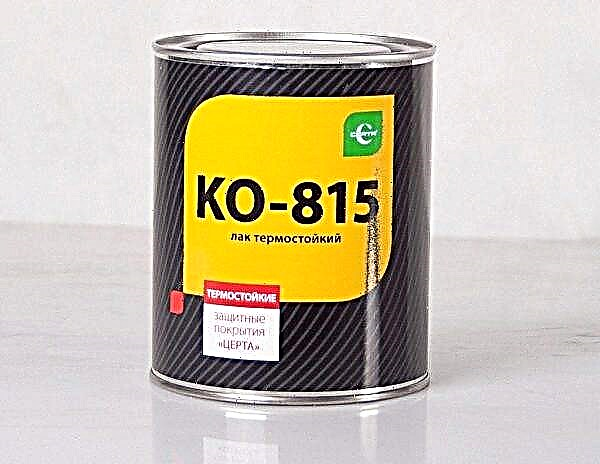
Conclusion
A variety of varnish products simplifies the search for a composition that meets the specific operating conditions of the varnished products. The choice is dictated by factors, the type of metal is important, the color of the future protective coating. Regardless of the type of composition used, the desired one can be achieved only by following the manufacturer's recommendations.
Polyurethane varnish
Available: transparent, glossy, matte. The composition of the substance includes modern polymers (polyurethane). It has excellent performance. Corrosion-resistant polyurethane solution is used as a protective finish coating on the inner surfaces of tanks made of steel, cast iron, aluminum, copper and their alloys.
Polyurethane varnish is also suitable for domestic use when performing internal or external finishing work. Easy application, quick drying, does not form smudges. Temperature atmospheric threshold during work: from -30 ° C to + 60 ° C.
Characteristics of polyurethane varnish:
- excellent adhesion
- wear resistant
- heat-resistant (temperature range during operation from -60 ° С to + 80 ° С),
- strong, stable, elastic coating,
- moisture resistant
- chemical inertness
- weather resistance
- long trouble-free operation of the coating and the product itself (at least 10 years).
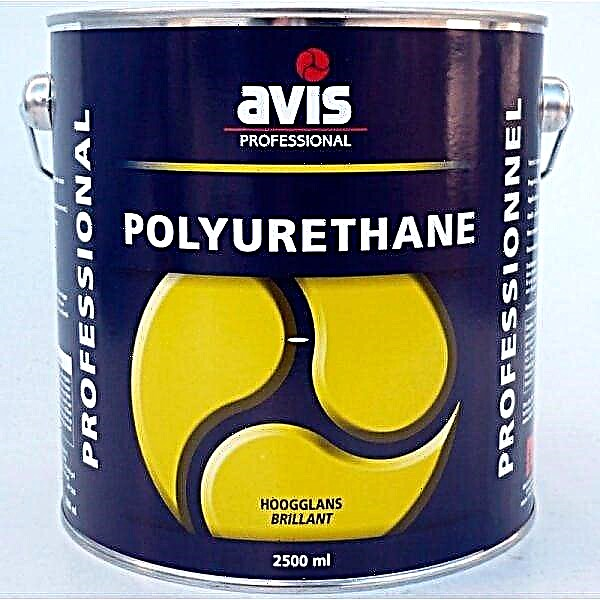 Polyurethane varnish can be used for interior and exterior decoration
Polyurethane varnish can be used for interior and exterior decorationTransparent polyurethane varnish allows mixing with pigment (to obtain a colored decorative protective layer). It can be used as a main (finish) coating or to protect metal before painting.


